

This map shows the estimated number of Jews murdered, country by country and region by region, between 1 September 1939 and 8 May 1945. The deaths shown here, in white figures on black, total just over 5,750,000. Such a total can never be complete: thousands of infants and babies were murdered by the Nazi killing squads in the autumn of 1941 before their births could be recorded for statistical purposes. Thousands more individuals, especially from the remoter villages in Poland, were added to the deportation trains which left larger localities, without any numerical note being made of their existence or their fate. For several hundred Jewish communities throughout Europe, the most that half a century of historical research has been able to record is some phrase such as The exact fate of this community is unknown. What is known is that each of these communities was destroyed in its entirety. Future research may well reveal that the total number of Jews murdered was more than six million.
Never Again
A History of the Holocaust
Martin Gilbert
Never Again: A History of the Holocaust
Copyright 2000 by Martin Gilbert
All rights reserved. No part of this book may be used or reproduced in any form or by any electronic or mechanical means, including information storage and retrieval systems, without permission in writing from the publisher, except by a reviewer who may quote brief passages in a review.
Electronic edition published 2015 by RosettaBooks
Cover design by Brehanna Ramirez
Cover image of the liberation of Dachau Concentration Camp on April 30, 1945, by Arland B. Musser of the U.S. Army Signal Corps, 157th Infantry, 45th Division, courtesy of the National Guard Bureau
ISBN (EPUB): 9780795346743
ISBN (Kindle): 9780795346750
www.RosettaBooks.com
Authors Note
Every effort has been made to trace ownership of copyright in the illustrations printed in this book. I am grateful to those copyright holders, institutions and individuals who have given me permission to reproduce material; they are AKG Photo, London (on pages 289, 31, 180), Akropolis Publishers, Prague (11, 20), Anne Frank-Fonds, Basel and Anne Frank Stichting, Amsterdam (1345), Archive Photos, New York (135). Archives of the State of Israel, Jerusalem (161), Associated Press(49), Auschwitz State Museum, Oswiecim, Poland (76, 77, 120, 122, 123, 180). Bibliotheque Historique de la Ville de Paris (85), Bildarchiv Preussischer Kulturbesitz, Berlin (35, 39, 43), Central Zionist Archives, Jerusalem (159), Evening Standard (56), The 45 Aid Society, London (154, 155, 156, 157, 171), Victor Gollancz, Publishers,London (32, 33). Estateof Rabbi Hugo Gryn (170). Art Collection, Beit Lohamei Hagettaot, Ghetto Fighters House, Israel (867, 131), Henschel Verlag, Berlin (109). Her Majestys Stationery Office, London (110). Hulton Getty Picture Library, London (front cover, 37, 45, 47 bottom), Huntington Library, California (37), Imperial War Museum, London (36, 150), Interpress Publishers, Warsaw (18). Jewish Historical Institute, Warsaw (73, 175), Kapon Editions, Athens (10). Keter Publishing House, Jerusalem (12, 13, 94, 95). Beate Klarsfeld Foundation, Paris (1, 138, 139), Main Commission for the Research of Crimes Against the Polish Nation The Institute for National Memory, Warsaw (52, 74, 90, 91, 93), News International Syndication (178, 179). Martinus Nijhoff, Publishers, Dordrecht, The Netherlands (143), Osterreichisches Staatsarchiv Austrian State Archives, Vienna (40, 41), R. Paknys Publishing House, Vilnius (163), Panstwowe Wydawnictwo Naukowe, Warsaw (130), Polish Institute and Sikorski Museum, London (131). Red Cross, Netherlands (134), Shalom Foundation, Warsaw (12, 16, 17, 25, 111, back cover), March Tenth Inc., Haworth, New Jersey (136, 137). United States Signal Corps (153), United States Holocaust Memorial Museum, Washington DC (96, 97, 99, 142). Wiener Library, London (33, 42, 45). Yad Vashem Film and Photo Department Archives, Jerusalem (5, 43, 49, 501, 52, 53, 54, 56, 57, 59, 60, 61, 65, 67, 72, 73, 83, 889, 98, 100, 108, 113, 1145, 118, 132, 137, 144, 146, 1489, 152, 153, 159, 160, 161, 175, 180), and the Zionist Organization Youth Department, Jerusalem (110, 111). Freddie Knoller and Eric D. Sugerman provided the postage stamps reproduced here (13, 42, 48, 83, 87, 91, 105, 119, 135, 142, 151, 165). The following individuals have given me permission to reproduce their material: Tom Bermann (44), Eve Line Blum (125), Ian Clifford (173), Gisela Feldman (47 top), Mark Gerson, (170), Paul Halter (87), Ben Helfgott (166), Rabbi Harry M. Jacobi (48), Jack Kagan (6, 15, 26, 27, 101, 158, 166), Felicja Karay (79), Robert Krell (103), Dov Levin (171). Judy Mandel (172, 173), Robin ONeil (2), Rafael F. Scharf (133), Malcolm Smith (38), Eric D. Sugerman (20, 64), Stella Kochawa Tzur (102), Mara Vishniac-Kohn (15, 223), Rudolf Vrba (140), JacekWeislo (169), Helga Weisova-Hoskova (4, 823) and Leon Weliczker Wells (164). I have also used my own photographs (11, 14, 69, 70, 74, 85, 126, 1289, 147, 162, 163, 165, 167, 168, 169 and 177), illustration (21) and postage stamps (28, 64).
CONTENTS

Bread and soup distribution in the Theresienstadt ghetto. A drawing done in the ghetto by a twelve-year-old girl, Helga Weissov. She survived the war, and lives today in the Czech Republic.

Two young boys in the Lodz Ghetto, photographed by Mendel Grossman, who survived the ghetto but died on a death march in Germany shortly before the end of the war. He was thirty-two years old. Most of the children in the Lodz ghetto did not survive the war.
Hear this, ye old men,
and give ear, all ye inhabitants of the land.
Hath this been in your days,
or even in the days of your fathers?
Tell ye your children of it,
and let your children tell their children,
and their children another generation.
BOOK OF JOEL
CHAPTER ONE, VERSES 2 AND 3

, shortly after reaching Auschwitz, and before being sent to the gas chambers, photographed by an SS Sergeant.
INTRODUCTION
Shortly before he was murdered in 1941, in Riga, the Jewish historian Simon Dubnov called out the words: Write and record! Thousands of Jews, unaware of Dubnovs call, tried to keep some record of what was happening to them during the Holocaustin diaries, letters and scribbled notes. Some of these notes have survived, and been published.
Artists and photographers recorded the fate of their fellow-Jews in paintings, sketches and photographs. Historians, authors and poets tried to convey in writing and verse their fate, and that of those around them.
The most intense period of the Holocaust lasted for less than four years, starting with the German invasion of the Soviet Union in June 1941. It was only brought to an end in May 1945 by the defeat of the German armies on the battlefield. When it ended, six million Jews had been murdered.
Polish-born Rafael Scharf, many of whose family and friends were murdered in the Holocaust, has written: It calls for a painful mental effort to envisage this apocalyptic world, for which there is no analogy in history. There have been wars, foreign occupations, oppression, persecution and murder on a massive scale; such horrors continue to abound, but it is totally without precedent that a whole people, without exception, should be separated from its surroundings and condemned to death.
Next page
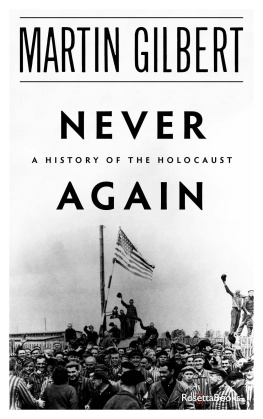
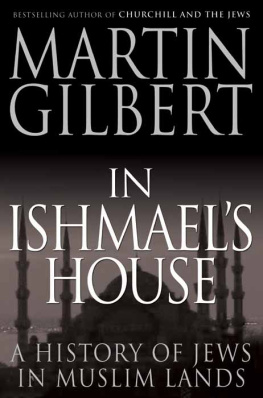
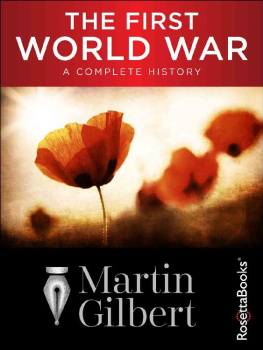

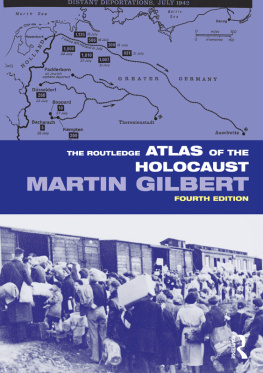
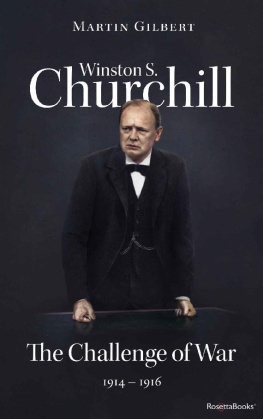

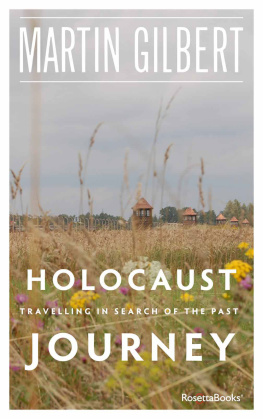
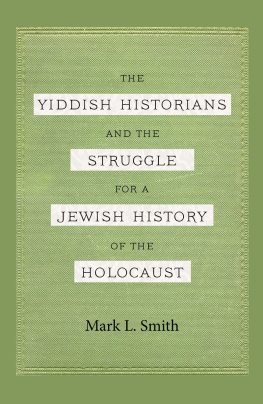
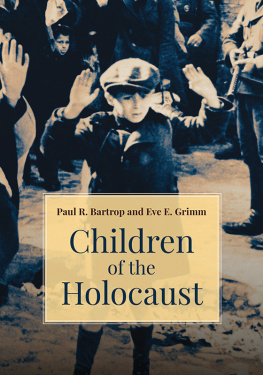
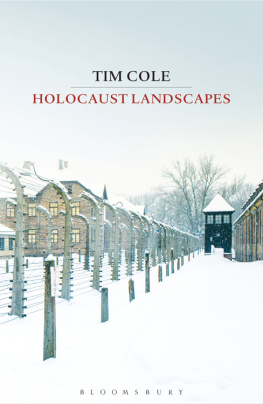
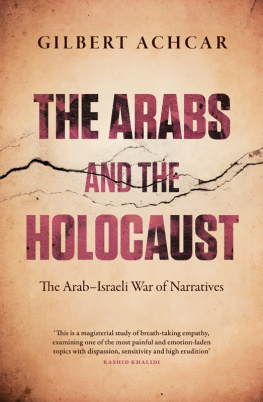

 This map shows the estimated number of Jews murdered, country by country and region by region, between 1 September 1939 and 8 May 1945. The deaths shown here, in white figures on black, total just over 5,750,000. Such a total can never be complete: thousands of infants and babies were murdered by the Nazi killing squads in the autumn of 1941 before their births could be recorded for statistical purposes. Thousands more individuals, especially from the remoter villages in Poland, were added to the deportation trains which left larger localities, without any numerical note being made of their existence or their fate. For several hundred Jewish communities throughout Europe, the most that half a century of historical research has been able to record is some phrase such as The exact fate of this community is unknown. What is known is that each of these communities was destroyed in its entirety. Future research may well reveal that the total number of Jews murdered was more than six million.
This map shows the estimated number of Jews murdered, country by country and region by region, between 1 September 1939 and 8 May 1945. The deaths shown here, in white figures on black, total just over 5,750,000. Such a total can never be complete: thousands of infants and babies were murdered by the Nazi killing squads in the autumn of 1941 before their births could be recorded for statistical purposes. Thousands more individuals, especially from the remoter villages in Poland, were added to the deportation trains which left larger localities, without any numerical note being made of their existence or their fate. For several hundred Jewish communities throughout Europe, the most that half a century of historical research has been able to record is some phrase such as The exact fate of this community is unknown. What is known is that each of these communities was destroyed in its entirety. Future research may well reveal that the total number of Jews murdered was more than six million.  Bread and soup distribution in the Theresienstadt ghetto. A drawing done in the ghetto by a twelve-year-old girl, Helga Weissov. She survived the war, and lives today in the Czech Republic.
Bread and soup distribution in the Theresienstadt ghetto. A drawing done in the ghetto by a twelve-year-old girl, Helga Weissov. She survived the war, and lives today in the Czech Republic. Two young boys in the Lodz Ghetto, photographed by Mendel Grossman, who survived the ghetto but died on a death march in Germany shortly before the end of the war. He was thirty-two years old. Most of the children in the Lodz ghetto did not survive the war.
Two young boys in the Lodz Ghetto, photographed by Mendel Grossman, who survived the ghetto but died on a death march in Germany shortly before the end of the war. He was thirty-two years old. Most of the children in the Lodz ghetto did not survive the war.  , shortly after reaching Auschwitz, and before being sent to the gas chambers, photographed by an SS Sergeant.
, shortly after reaching Auschwitz, and before being sent to the gas chambers, photographed by an SS Sergeant.